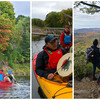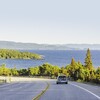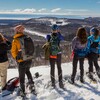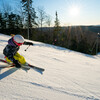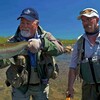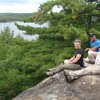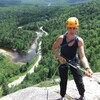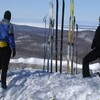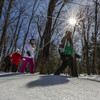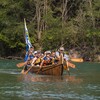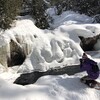
Climbing Adventures
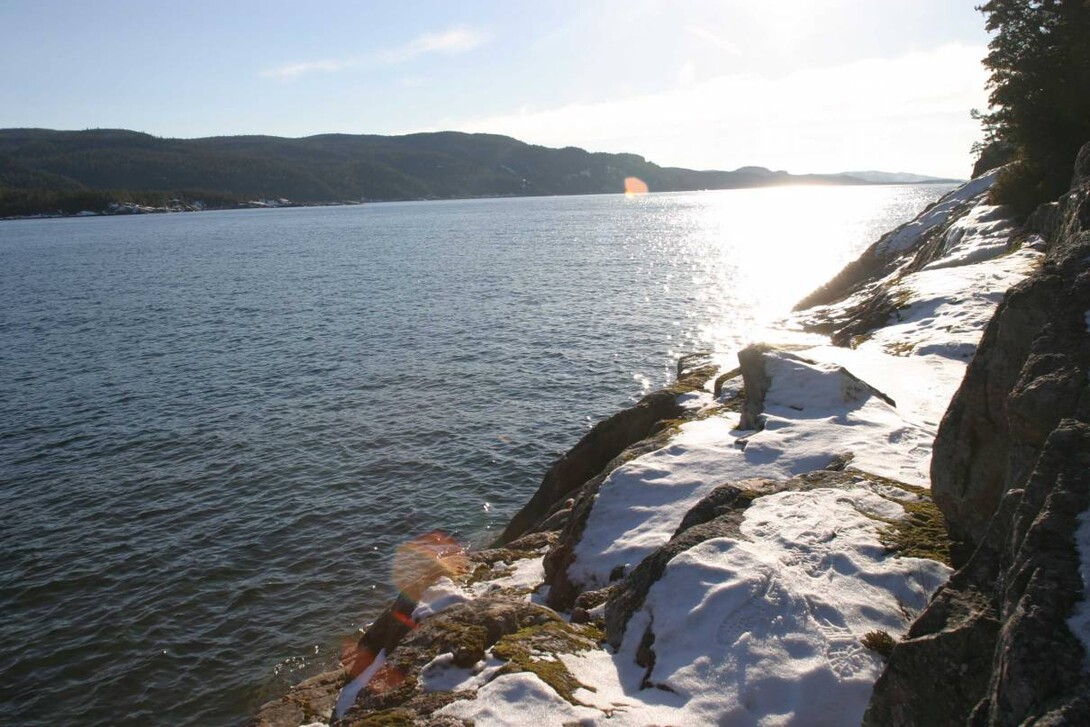
First Time Jitters
I’ve driven down this very spot of Highway 17 hundreds of times before, each pass having no idea what adventure lied just off the road. Today, I’m about to find out.
Near The Voyageur’s Lodge and Cookhouse in Batchawana Bay lies a 60-foot ice climb that both excites the mind and stimulates the senses. The cliff rests about a 20-minute hike off the highway. As I drive to the destination from Sault Ste. Marie, I can feel my heart pounding. The closer I get, the faster it beats. I meet with adventure guide Shaun Parent, who owns the Batchawana-based North of Superior Climbing Company.
We first stop by his office to grab some gear. “It’s a really unique area (for climbing),” he tells me. Having lived in Northern Ontario for many years, I have my doubts. After all, I thought, I’m pretty familiar with the Algoma region. These doubts would soon subside, though. Plastered on the walls of Shaun’s office are stories on the area’s ice climbing spots. Especially eye opening are the ones published in the New York Times and Toronto Star.

Being a world traveller and adventurist, Shaun’s tales outshine mine with ease. The hike to the cliff is gradual — so gradual that I barely feel an incline most of the time. But when I look back a few minutes later, we’re already a couple hundred feet above the Batchawana Bay shoreline.
I see Lake Superior like I never have before: looking down from above. It’s a beautiful sight even with ice covering the bay as far as the eye could see. Animal tracks line the trails, another perk of adventure seeking in the rugged Northern Ontario wilderness. Knowing that in just a few short minutes I’ll be climbing, I start to panic a little. But I put on a brave face and play it off with a few corny jokes.
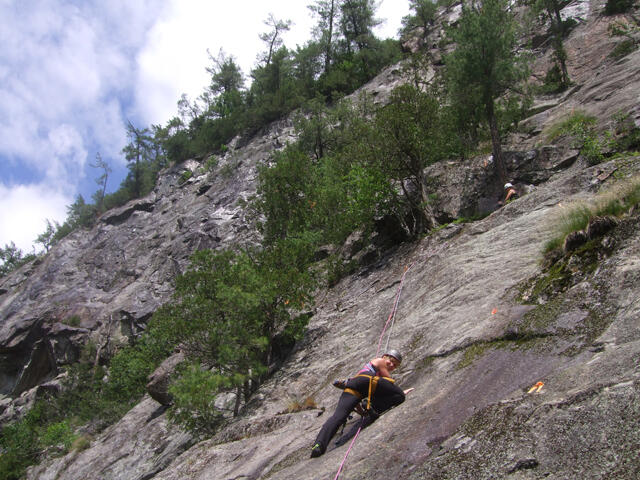
When we reach the bottom of the ice cliff, we’re about 300 feet above Batchawana Bay. I can hardly believe that we’re so high, given the gradual incline of our hike. I look up to something amazing: a wall of ice crystallized over the mountain. This formation began forming months ago, ever so slowly, when falling water droplets started freezing one at a time. When I get there, the ice is several feet thick in some places. We walk to the top of the ice cliff and each tie a rope line to our harness. We’re ready to rappel down. I’m now standing on the edge of the cliff.
Every natural instinct I have is telling me to remain on the safety of the ground. “Trust me,” Shaun says. I do, albeit reluctantly. I’m now leaning backwards, my weight supported by the rope. By now, my instincts are telling me to grab one of the tree branches within reach, just in case. But knowing I’m in the good, capable hands of a professional, I manage to overcome my natural urges.
Controlling my rope, and thus my descent, Shaun lets me drop a few feet at a time. Facing the ice sheet as I fall, I notice some pretty interesting shapes formed — sharp in some areas, blunt in others, all formed naturally as the water flowed off the cliff and froze to the rock wall. After lowering me to the bottom, Shaun rappels himself down. He uses a Prusik cord, a device that would stop his decent and possibly save his life should he lose consciousness while rappelling down. Once we’re both at the bottom again, we then prepare to climb up. I drive my ice axe into the base.

Then, with the help of spikes on my crampon climbing boots, I make it up the cliff a few feet at a time. The rappel down was a heck of a lot easier, but going up is exciting, too. It was my first climb. But for Shaun, this is just another day in the office. As the owner of North of Superior Climbing, and also a geological surveyor, the 50-year-old is no stranger to the sport.
There are about 200 locations in the area to ice climb, some as high as 600 feet. Many of these spots were developed by Shaun, who often goes searching for new cliffs to develop. “I like being a pioneer,” he admits. The Algoma region is the “last frontier” of ice climbing, says Shaun.
And Agawa Canyon offers something even more special. “It’s the only place in the world where you can go in by train and ice climb,” he says. With such uniqueness, the region attracts ice climbers from around the world each year. But unlike many tourism businesses in the area, North of Superior doesn’t appear to be hurting from the recent global economic downturn.
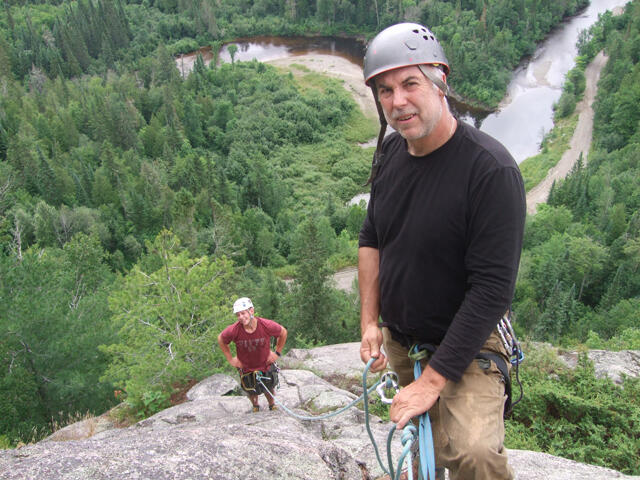
Most of his customers are from the U.S. midwest. With the markets tanking, it makes more sense to climb closer to home. And within a day’s drive, the Algoma region easily does the trick. “It’s cheaper for them to drive here than to fly elsewhere,” says Shaun, who has penned several climbing guides on the Algoma region. The end result is a decent year for business, so far.
During my first climb, I learn that the Algoma District and North of Superior have much to offer — for both ice climbing and rock climbing. As I drive back to the safety and calmness of my house, I start to think about what I just experienced. Looking in my rear view mirror, I can’t help but crack a smile, proud of what I just did.
I also can’t help but be a little ashamed of myself. After all, I’ve lived in the region my entire life and have never heard of North of Superior or ice climbing in general until recently. But that aside, I now have my first climb under my belt. And already, I’m looking forward to my next.
For more information on iceclimbing information contact North of Superior Climbing
Recommended Articles

9 Facts to Know about the Agawa Canyon Tour Train
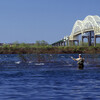
A Guide to the Best Urban Fishing in Sault Ste. Marie, Ontario

Where to Eat, Dine, and Play on the Sault Ste. Marie Waterfront

Cruising to the Next Level

Canada's Only Bushplane Museum is a Must For Your Bucket List

Why the Fall Is a Great Time to Visit Sault Ste. Marie
Canoe & Kayak Sault Ste. Marie

Peace Restaurant
